Prevention, Treatment, and Recovery Resources
Definitions
Proper opioid medication use is defined as taking prescription opioids in the amount and for the duration specified by a medical professional.
Nonmedical use of opioid medication occurs when opioids are taken in a manner or dose other than prescribed. This can include:
- Taking to much medicine;
- Taking someone else's medicine (even for a legitimate medical complaint);
- Taking medication in a different way than prescribed; or
- Taking the medication to get a euphoric high.
Diversion occurs when medications, like prescription opioids and stimulants, are illegally distributed and used for purposes not intended by a medical professional. See below for common ways prescriptions are diverted.
Overdose death in the United States has increased at an alarming rate since the onset of the COVID-19 pandemic with an increase of 30% in 2020 compared to 2019. Despite rising rates of overdose, substance use-related harms are preventable.
How to Prevent the Non-Medical Use of Opioid Medication, Overdose, and Diversion
Safe Use, Storage, and Safe Disposal of Prescription Medications
Opioid use is the primary driver of drug overdose deaths in Montana. The 2019 Youth Risk Behavior Survey showed that over one in ten high school students has taken a prescription drug without a doctor’s prescription. In 2020, Montana had 46.1 opioid prescriptions for every 100 residents. According to the Montana Department of Health and Human Services Injury Prevention Program, In 2021, Montana saw 113 opioid overdose deaths (Adults aged 25-44 had the highest rate (58%) followed by adults aged 45-64 (38%) and males accounted for 66% of these deaths).
The best ways to prevent the nonmedical us of prescription opioids and opioid overdose is to be informed on safe usage, storage and disposal.
View these links for the proper usage, storage, and dispoasal of perscrition opioids.
Email Request for Disposal Pouches
Naloxone
Naloxone is a synthetic prescription opioid medication used to reverse a opioid (prescription or illicit opioid) overdose. There are 3 FDA-approved formulations available to Montanans:
- Injectable: professional training required.
- Auto-injectable: prefilled auto-injection device for families or emergency personnel to inject quickly into outer thigh. The device provides verbal instruction to the user describing how to deliver the medication.
- Nasal Spray: prefilled, sprayed into one nostril while patients lay on their back. No professional training required.
Montana DPHHS Resources
Help Save Lives Overdose Act (2021)
You can find the link to the Help Save Lives Overdose Act (2021) here.
Counterfeit Pills
Adderall is a prescription stimulant used to treat Attention-Deficit / Hyperactivity Disorder (ADHD). Adderall can be used in a nonmedical way as a study aid, to stay awake, and to suppress ones appetite.
 |
 |
Authentic Adderall (front and back) |
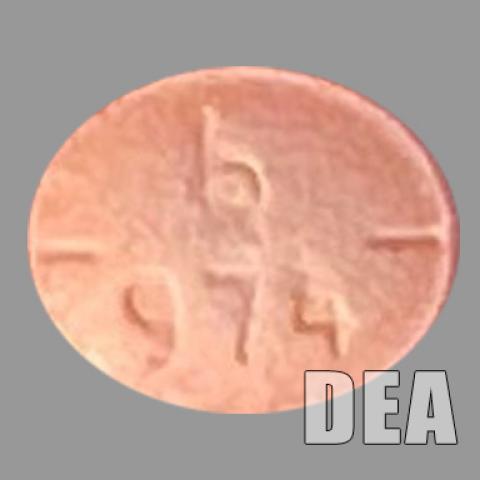 |
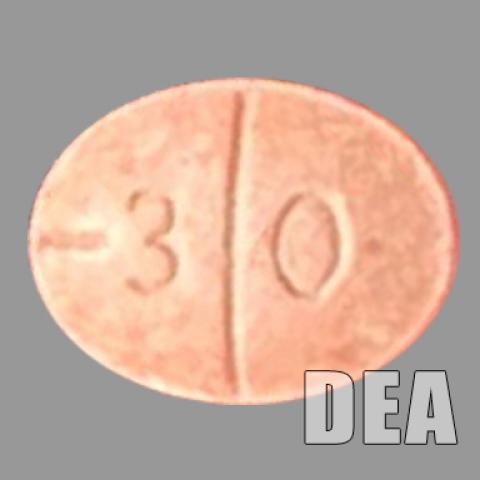 |
Counterfeit Adderall (front and back) |
Oxycodone (OxyContin) is a synthetic opioid prescriped by doctors to treat and manage pain. Opioids have a high potential for substance use which can quickly turn into a substance use disorder referred to as Opioid Use Disorder (OUD).
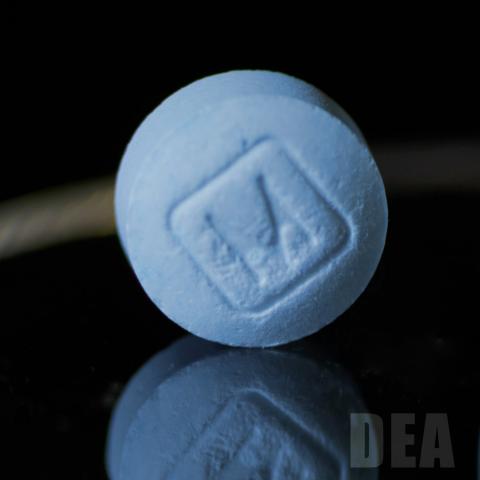 |
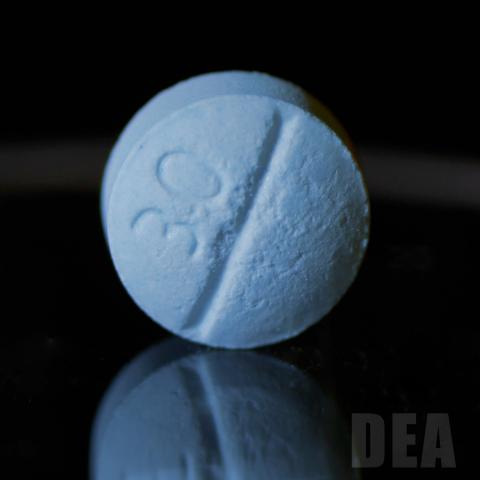 |
Authentic Oxycodone (front and back) |
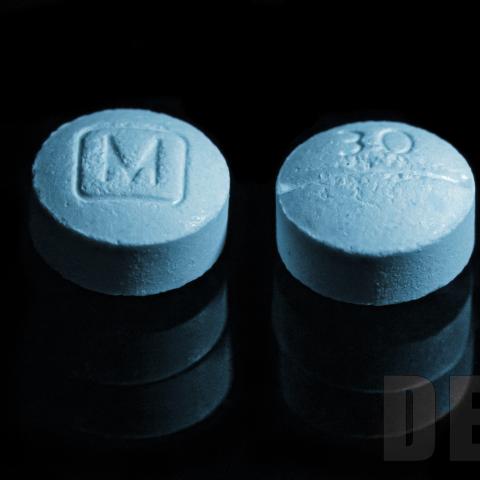 |
Counterfeit Oxycodone (front and back) | |
DEA Resources for Stimulants
- Visit dea.gov/onepill website here for more information
- DEA Counterfeit Drug Fact Sheet (updated 2021)
- Get Smart About Drugs: Resources for Parents, Educators, and Caregivers
Emoji Drug Code Decoded
View, donload, or print emoji drug code-decoded here.
Diversion is Against the Law in Montana
Common ways prescriptions are diverted include:
- Selling your prescriped medication to someone to make money
- Stealing someones prescribed mediction for your own use or to sell
- Attempting to obtaining multiple controlled substances from several different medical professionals without them knowing (doctor shopping)
- Illegal internet pharmacies
- Illegal prescribing by a medical professional
Commonly diverted medications include?
- Anabolic steroids; Central nervous system depressants; Hallucinogens; Opioids; and Stimulants.
State and Tribal Suicide Prevention Resources
Montana suicide prevention resources are available here. If you are in crisis and want help, call the Montana Suicide Prevention Lifeline, 24/7, at:
- CALL: 1-800-273-TALK (1-800-273-8255)
- TEXT: “MT” to 741741
- Additional Resources for specific groups/communities (schools, veterans, college students, suicide survivors, American Indians, correctional facilities, etc.)
- MONTANA’S CAST-S Crisis Action School Toolkit on Suicide 2017
- Indian Health Services suicide prevention resources are available
National Suicide Prevention Resources
- Visit the National Suicide Prevention Hotline
- Visit the National Suicide Prevention Lifeline CrisisChat webpage
Mental Health Resources
- If you or someone you know is in crisis, please call 988 to be connected to the National Suicide Prevention Lifeline or 911 if a person is in immediate danger
- For more and to access the Lifeline Call Center Coverage Map

- Montana Mental Health Centers list
- Medicaid and Public Mental Health Services for Adults available
- Children's Mental Health Bureau available
- County Mental Health Resource Guides
- Mental Health Services Bureau Programs and Contacts
- Montana Chapter of the National Alliance on Mental Illness (NAMI)
- MSU Extension Health and Wellness
- Indian Health Services Mental Health Services and resources
Thrive for Montana
As a component of our 2018 SAMHSA project, the Thrive for Montana program was expanded. FREE enrollment opportunities are available to adult Montanans! What is Thrive? Thrive by Waypoint Health Innovations is a self-paced and confidential online program for people who want to take charge of their emotional well-being. The program is comprised of three modules that teach cognitive behavior therapy (CBT) skills that may help the user communicate more confidently, think more constructively, and do more activities that make them feel good. Those interested can register here.
Teen Resources
Announcing teen Mental Health First Aid Launch We’re excited to announce that teen Mental Health First Aid (tMHFA) is now available nationally in-person and online! It’s more important than ever for teens to recognize the signs and symptoms of mental health challenges – for themselves and others. The tMHFA curriculum addresses trauma, self-care, wellness and resilience. You can be the difference for your teens and peers by bringing tMHFA to your school or organization. Learn how to get started today!
The National Council created a directory of resources for addressing health equity and racial justice in communities - learn more here: The National Council for Mental Wellbeing
The Department of Education is announcing a new resource, “Supporting Child and Student Social, Emotional, Behavioral and Mental Health,” that outlines key challenges in providing and accessing mental health supports in schools and provides evidence-based recommendations for educators, staff, and providers to create a system of supports for students with behavioral health needs and their families. See the full fact sheet from White House: Improving Access and Care for Youth Mental Health and Substance Use Conditions
To access the “Supporting Child and Student Social, Emotional, Behavioral and Mental Health,” pdf, please visit https://www.ed.gov/and type mental health in the search bar.
Prevent Addiction Stigma in Your Communities
MSU Extension Prescription Opioid Educationa and Awareness Toolkit Module 3: Stigma and Opioid Use Disorder MSU Extension video series Reduce Stigma by Learning About Medication Assisted Treatment for Opioid Use Disorder The Shatterproof Addiction Stigma Index: Shatterproof and The Hartford co-developed the Shatterproof Addiction Stigma Index (SASI) – a first-of-its-kind measurement tool designed to assess attitudes about substance use and people who use substances from the public. Supported by Ipsos alongside Dr. Brea Perry and Dr. Anne Krendl from Indiana University, the SASI also measures the perceptions of those with a SUD, including the degree in which they have internalized this exclusion. Download the Report Eliminating the stigma and discrimination faced by those with substance use disorders (SUD) has never been more important. Despite decades of action combatting the addiction crisis, negative beliefs, attitudes, and behaviors remain the largest and most persistent drivers of negative outcomes for those struggling with addiction. During the first year of the COVID-19 pandemic, from March 2020 to March 2021, 96,000 people died from overdose – the highest number in history. At the same time, 20 million American adults continued to suffer from the disease of addiction. The COVID-19 pandemic has worsened this crisis by increasing economic instability and social isolation, while reducing access to harm reduction, treatment, and recovery services. Structural racism and already-existing health inequities have worsened the impacts of the pandemic for marginalized communities, leading to increased rates of substance use and overdose. These effects will be felt for years to come, highlighting the urgent need to act.
Treatment and Recovery Resources
What is Opioid Use Disorder?
Opioid Use Disorder (OUD) is a pattern of opioid use that causes significant impairment or distress.The term OUD is preferred over other terms such as opioid abuse, opioid dependence, oropioid addiction.
What is Medication Assisted Treatment?
According the Substance Abuse and Mental Health Administration (SAMHSA),
Medication Assisted Treatment or MAT, is the use of medications, in combination with counseling and behavioral therapies, to provide a “whole-patient” approach to the treatment of substance use disorders.The medications used to treat substance use disorders are approved by the Food and Drug Administration (FDA).
Research shows that MAT can successfully treat substance use disorders, and for some medications can help sustain recovery. Medications, like naloxone, are also used to prevent opioid overdose and reduce opioid overdose deaths.
The ultimate goal of MAT is full recovery, including the ability to live a self-directed life. MAT has been proven to:
-
Improve patient survival
-
Increase retention in treatment
-
Decrease illicit opiate use and other criminal activity among people with substance use disorders
-
Increase patients’ ability to gain and maintain employment
-
Improve birth outcomes among women who have substance use disorders and are pregnant
To learn more please visit the SAMHSA.gov website
What Medications are Used to Treat Opioid Use Disorder?
Buprenorphine, methadone, and naltrexone are the most common medications used to treat OUD. These medications operate to normalize brain chemistry, block the euphoric effects of alcohol and opioids, relieve physiological cravings, and normalize body functions without the negative and euphoric effects of the substance used.
Buprenorphine, methadone, and naltrexone are used to treat OUD to short-acting opioids such as heroin, morphine, and codeine, as well as semi-synthetic opioids like oxycodone and hydrocodone. These medications are safe to use for months, years, or even a lifetime. As with any medication, consult your doctor before discontinuing use.
Opioid Overdose Prevention Medication
Find Treatment
Medications for substance use disorders are administered, dispensed, and prescribed in various settings such as a SAMHSA-accredited and certified opioid treatment program (OTP) or practitioners’ offices depending on the medication.
- Opioid Treatment Program Directory
- SAMHSA’s Buprenorphine Treatment Physician Locator
- SAMHSA’s National Helpline; Call: 1-800-662-HELP (4357); Text: 435748
- Substance Use Treatment Locator (FindTreatment.gov)
Montana Department of Health and Human Services Resource links:
- Get the facts on Substance Use Disorder in Montana
- Recognize Addiction for Opioid Use Disorder and Treatment Options
- Learn about Naloxone, Dropbox Locations and Safe Storage and Disposal of Prescription Medications
- Find Treatment and Resources for Parents, Family and Friends
- Get involved with theSUDs Task Force and CDC Grant Overview
- IF YOU ARE A PROVIDER: Access Information for Providers, First Responders and Pharmacist
Use the interactive link below to find Substance Use Disorder Providers by Level of Care
https://dphhs.mt.gov/amdd/substanceabuse/treatmentproviderinformation
Important Update on Access to Treatment for OUD
All practitioners who have a current DEA registration that includes Schedule III authority, may now prescribe buprenorphine for Opioid Use Disorder in their practice if permitted by applicable state law and SAMHSA encourages them to do so. SAMHSA and DEA are actively working on implementation of a separate provision of the Omnibus related to training requirements for DEA registration that becomes effective in June 2023. Please continue to check this webpage for further updates and guidance.
Recovery Resources


